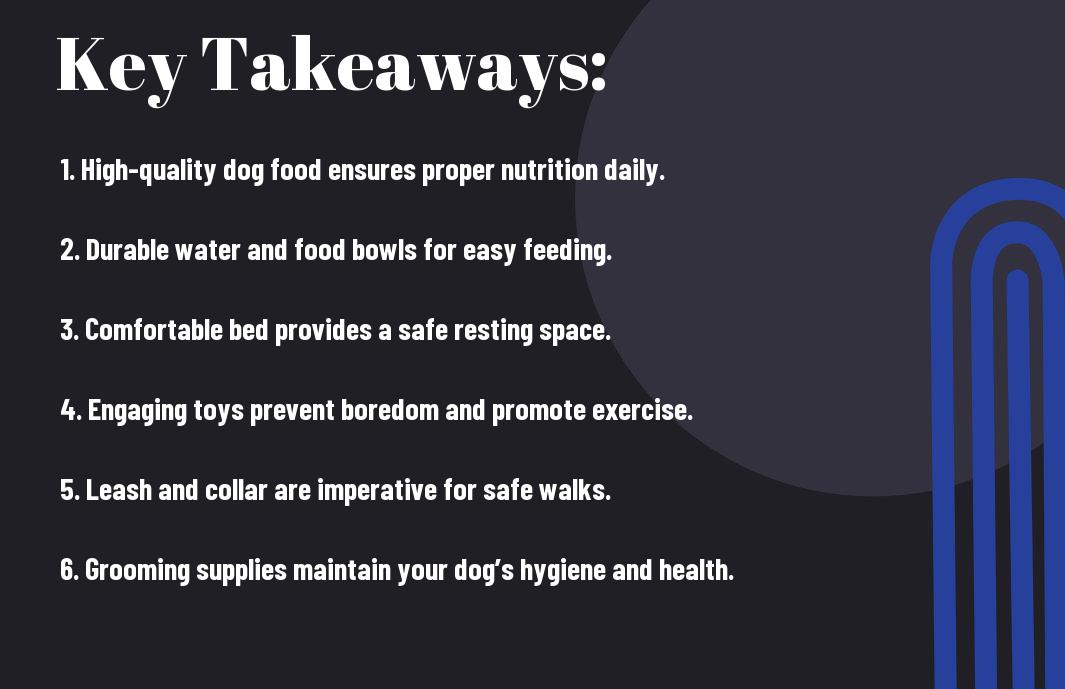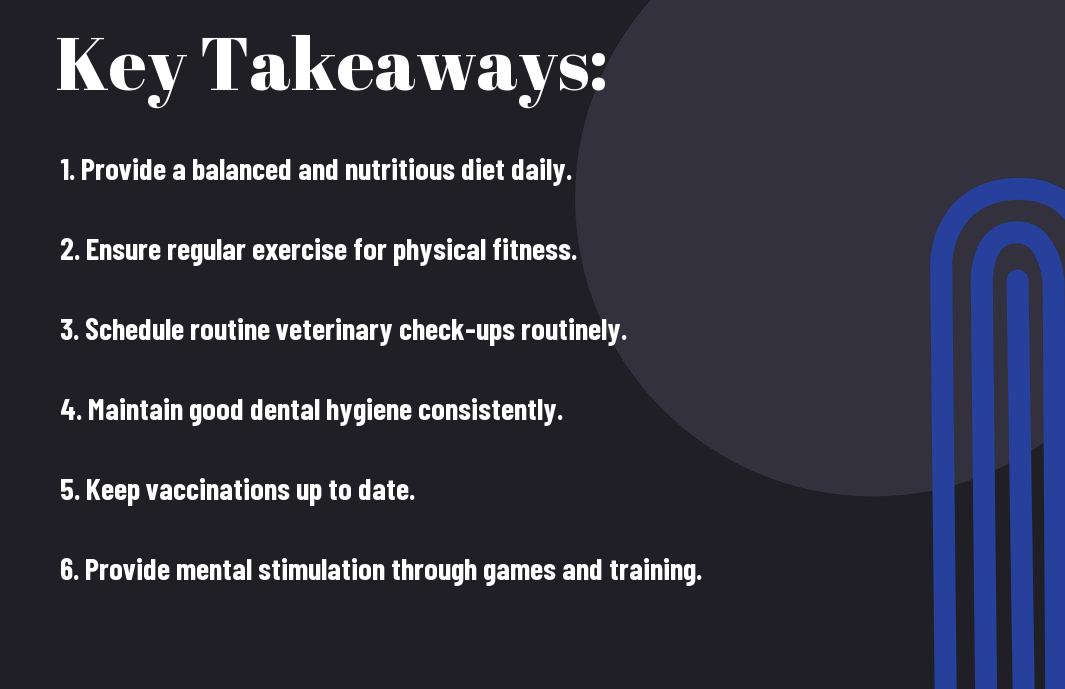Just by using consistent positive reinforcement training rooster methods you can reduce aggression and build dependable trust; this guide shows how you can safely handle and target-train your bird to minimize dangerous pecking and charging while maximizing calm cooperation, crate acclimation, and clear timing cues; with patient, stepwise techniques you’ll strengthen bonds and create predictable behavior that protects both you and your flock.
Understanding Rooster Behavior
You should expect roosters to act on instincts shaped by flock dynamics, with dominance hierarchies often forming within 48–72 hours in groups of 3–10 birds. Watch for patterns — daily tidbitting, alarm calls, and male-to-male displays — because they tell you when to apply positive reinforcement training rooster techniques like target or crate training to reduce fear and redirect aggression.
Social Structure and Hierarchy
Roosters organize into a mostly linear pecking order where an alpha male enforces access to mates and food; in small flocks of 3–8 birds this hierarchy stabilizes quickly and directly affects which individuals you can train first. Start with lower-ranking birds to build confidence, but train alphas with clear, consistent rewards to reduce their need to assert dominance through spur strikes or blocking access to resources.
Communication and Body Language
Roosters communicate with short alarm calls, tidbitting clucks, and visual signals: head tilts, wing flicks, tail fanning, and feather puffing. You should treat a lowered head with direct stare or fluffed neck feathers as a warning and a slow, relaxed approach with soft clucks as curiosity; use these cues to time rewards, and note that raised hackles and forward lunges are escalation signs to back off immediately.
In practice, watch micro-behaviors: a rooster that cocks his head and freezes is assessing you and is prime for a 1–2 second reward to reinforce calm; conversely, repeated short, sharp alarm calls or tail fanning predict an imminent charge. Use clear, consistent signals — a target stick or distinct marker sound — and deliver treats within 1–2 seconds of the desired response to strengthen associations and reduce defensive reactions.
Positive Reinforcement Basics
Definition and Importance
You reinforce desired behaviors by rewarding them immediately so your rooster connects action and outcome; aim for rewards within 1–2 seconds. Use short, frequent sessions (2–5 minutes, 2–3 times daily) to build trust and reduce reactive aggression, keeping handling calm and predictable to avoid escalating fear.
- positive reinforcement training rooster — core focus
- timing — reward within 1–2 seconds
- consistency — short daily sessions
This approach speeds learning and lowers reactive incidents when applied reliably.
| Reward type | Small, high-value treats (mealworms) |
| Timing | 1–2 seconds after behavior |
| Session length | 2–5 minutes |
| Frequency | 2–3 times per day |
| Expected outcome | Increased calm handling, reduced aggression |
Types of Positive Reinforcement
You can use food rewards (mealworms, corn), a clicker or vocal marker, target training with a stick, gentle tactile praise, and environmental enrichment like foraging feeders to reinforce calm handling and crate entry.
- positive reinforcement training rooster — food, clicker, target
- target training — guides movement into crates or perches
- enrichment — reduces boredom-driven aggression
This mix helps you shape complex behaviors without force.
| Food rewards | Mealworms, corn kernels — high value |
| Marker signals | Clicker or short vocal cue |
| Targeting | Target stick for stepping or turning |
| Tactile | Gentle stroking when calm |
| Enrichment | Foraging toys, varied perches |
You should start with continuous rewards (100% for first 3–7 days), then shift to variable schedules (25–50% over 3–6 weeks) to maintain behavior while preventing overfeeding; target training can teach crate entry in 10–15-rep sessions, and gradual crate exposure (5–10 minutes incremental increases) lowers handling stress.
- positive reinforcement training rooster — start continuous, then fade
- reinforcement schedule — move to variable ratio
- crate training — short, incremental steps
This staged plan lets you measure progress and sustain gains.
| Shaping | Reward small approximations toward goal |
| Schedule | Continuous → variable ratio (25–50%) |
| Crate steps | 5–10 min increments, pair with treats |
| Target reps | 10–15 reps per short session |
| Progress tracking | Log sessions, incidents, and responses |

Gentle Handling Techniques
Approaching Your Rooster
Move slowly and speak softly, approaching from the side rather than head-on; stop at about 3–5 feet and crouch to appear non-threatening. Extend a closed hand with a high-value treat (mealworms or cracked corn) to link you to reward, supporting your positive reinforcement training rooster efforts. Use a target stick for 10–15 short sessions to teach stationing, and if he paces or flares, give 5–10 minutes before trying again.
Safe Handling Practices
Support the bird’s body by placing one hand under the keel and the other over the wings to tuck them gently, keeping the rooster close to your chest to limit thrashing. Watch for spurs and pecking and consider gloves for the first 2–3 sessions. Keep handling sessions to 5–10 minutes and finish with a treat to reinforce calm behavior.
Begin with short, incremental lifts: practice with a calm hen, then move to your rooster for 2–3 minute increases. If he resists, wrap him loosely in a towel to control legs while avoiding pressure on the sternum. Keep movements slow and steady; using 2–3 rewards per session and consistent 5–10 minute training over 2–4 weeks reliably lowers stress responses and reduces aggressive incidents.
Building Trust with Your Rooster
Start by committing to short, predictable interactions so your rooster learns to expect calm contact; consistency of 5–10 minutes daily trains curiosity, not fear. Vary your approach—sitting beside the coop, offering a hand-level perch, or target-training with a stick—while watching for signs of aggression or stress (puffed feathers, fast stepping). With steady timing and the positive reinforcement training rooster mindset, you’ll see measurable reductions in flightiness within 1–3 weeks.
Creating a Routine
Set the same window each day—morning after feeding or late afternoon—so your rooster associates you with calm rewards; begin with 3–5 minute sessions and build to 10–15 minutes. Use a clear cue like “come” or a target stick for each session, mix in crate training for 2–3 minutes to acclimate handling, and log progress: record date, duration, and responses to track improvement.
Rewards and Bonding Activities
Offer high-value treats such as mealworms, sunflower seeds, or small bits of cooked rice, limiting to 3–5 mealworms per session to avoid overfeeding. Hand-feed while seated, let the rooster peck gently from your palm, and follow successes with soft verbal praise; stop immediately if you notice lunges or raised hackles to avoid reinforcing aggression.
Time rewards within one second of the desired behavior—instant feedback accelerates learning. Alternate primary treats with lower-value rewards (scratch or a brief lap around a fenced yard) to build durable habits; many keepers report measurable trust gains in 7–14 days of daily 5–10 minute sessions. Maintain safety by keeping a mirror or perch for escape routes and watching spurs during close handling.

Reducing Aggression through Training
Use targeted desensitization and counter-conditioning to replace defensive reactions with calm responses. Run short, consistent sessions (3–5 minutes, 2–3 times daily) using high-value rewards like mealworms or cooked egg; track progress in a log so you can adjust distance, timing, and reinforcements. When you pair approach with reward and clear cues, you convert instinctive charging into a learned stationing behavior, lowering incidents and improving handling safety.
Identifying Aggressive Behaviors
Watch for early signs: direct staring, raised hackles, loud crowing when approached, wing-spreading, lunging, repeated pecking or spur use. Note context—food, hen proximity, or territory triggers—and record distance at which the rooster reacts. Mark charging, continuous biting, and spur strikes as high-risk behaviors requiring immediate management and modified training plans to protect you and the flock.
Training Techniques to Minimize Aggression
Use target training to redirect focus—teach your rooster to touch a stick for a treat, then reward increasing distancing and calm. Combine with gradual approach work: start at 3–5 feet and close in 6–12 inches per session, rewarding compliance; crate or station training for brief containment helps reduce escalation. Emphasize timing—reward within 1 second—and avoid aversive corrections that reinforce fear or aggression.
For practical steps, begin by placing a target 2–3 feet from you and feed a treat immediately after successful touches, repeating 8–12 reps per short session. Progress by asking for 3 seconds of calm before rewarding, then increasing hold time by 1–2 seconds each day. In one keeper’s anecdote, daily 4–5 minute sessions cut charging incidents from several times per week to near zero within three weeks; always keep a barrier handy and use gloves if spurs are an issue.
Advanced Training Techniques
Push past basics by using staged shaping, chaining, and variable rewards to refine your positive reinforcement training rooster results. Use short, focused sessions of 5–10 minutes, aim for 3–5 clear repetitions per step, and track success rates — many handlers see ~80% reliable responses within 4–6 weeks when consistent. Watch for stress signals and pause if your bird shows frozen posture or raised hackles.
- Target training with a stick: break complex behaviors into 1–inch increments.
- Clicker or marker timing: mark within 0.5 seconds of desired motion.
- Shaping sequences: reward successive approximations, not full behaviors immediately.
- Chaining: link simple behaviors into routines (step-up → follow → crate).
- Variable reinforcement: move from continuous to intermittent rewards after ~70–80% success.
- Desensitization: pair mild stressors with high-value treats over 7–10 sessions.
Technique breakdown
| Technique | Why it works / Example |
|---|---|
| Target stick | You guide movement precisely; e.g., teach a 12-inch step-up by moving target 1–2 inches per reward. |
| Clicker timing | Marks exact behavior — click within 0.5s, then give a pea or corn kernel within 1–2s to reinforce. |
| Crate training | Creates safe space; begin with 2–3 minutes with door open, build to 20+ minutes over 2 weeks. |
| Variable rewards | Prevents extinction; switch to intermittent treats after 70–80% correct responses to maintain performance. |
Teaching Tricks and Commands
Start simple: teach “step-up” first using a low perch, reward every correct step for the first 20–30 reps, then introduce a clicker to sharpen timing. After steady success, chain commands like “step-up → spin → sit” with tiny increments and 5–10 minute daily sessions. If aggression appears, halt training and use distance-based rewards until calm returns.
Introducing New Environments
Introduce novel spaces gradually: allow your rooster to observe from a safe distance for 3–5 minutes, then offer high-value treats while lowering the distance across multiple short visits. Use familiar cues (target stick, clicker) to anchor learning, and avoid loud crowds or sudden handling during initial exposures to reduce fear responses.
For more depth, run a staged exposure plan: Day 1–3 observe from 5–10 feet with treats every 30–60 seconds; Day 4–7 move to 2–3 feet and add target work for 3–5 minutes; by weeks 2–3 combine short walks in the new area, keeping sessions under 10 minutes. Track physiological signs (breathing rate, vocalizations) and stop if you see prolonged freezing or aggressive lunges.
Conclusion
Hence you can reshape your rooster’s behavior through patient, consistent positive reinforcement training rooster methods; by giving timely rewards, gentle handling, short sessions, and clear cues you will reduce fear and aggression, build trust, and improve crate and target training. With steady timing and calm leadership your bird becomes more cooperative and reliable.
FAQ
Q: Can roosters really be trained using positive reinforcement, and what limits or expectations should I set when beginning positive reinforcement training rooster?
A: Yes — roosters are capable of learning a surprising range of behaviors through positive reinforcement. They are social, motivated by food and attention, and can form associations between cues, actions, and rewards. Setting appropriate expectations will make the process more effective and less frustrating. Training a rooster is not the same as training a dog or parrot: progress is often measured in small, incremental steps, and individual differences in temperament, breed, age, and past experience shape how quickly a bird responds.
Start by identifying clear, achievable goals: accepting handling, stepping onto a handler’s hand, coming when called, moving into a crate on cue, targeted touching, and de-escalating aggressive responses. Each goal should be broken into tiny, trainable steps (a method called shaping). Use short, frequent sessions (3–10 minutes, 1–3 times daily) that keep the bird engaged without overstimulating it.
Key elements for any positive reinforcement training rooster program:
– High-value rewards: small bits of favorite food (mealworms, sweet corn, cooked rice, seed mixes) delivered immediately after the desired action. The value of the reward depends on the individual rooster; test what he prefers.
– A clear marker: a clicker, a consistent word like “yes,” or a short whistle to mark the exact moment the desired behavior occurs. The marker lets the rooster know precisely which action earned the reward.
– Timing: deliver the marker and then the reward within a second or two; this tight timing is what builds the association.
– Consistency: use the same cue and response pattern so the rooster can predict what behavior earns reinforcement.
– Patience: progress often looks like small gains — a rooster who once froze and fled might now take a treat from your hand or step onto a perch when cued.
Be aware of realistic limits: roosters can learn to tolerate and even enjoy handling, perform target training, and reduce fear or aggression towards humans, but training cannot overwrite serious medical issues, deep-seated fear from long-term abuse, or hormonal drives tied to breeding seasons. Training during times of lower hormonal activity (outside peak mating seasons) often yields steadier progress. Always pair training with environmental management (safe spaces, predictable routine, adequate nutrition) to support learning.
Q: What are the most effective positive reinforcement methods to reduce aggression and build trust, including step-by-step handling techniques and signs to watch for?
A: Reducing aggression in roosters using positive reinforcement is a two-pronged process: change the bird’s emotional response to people or stressful situations through counterconditioning and desensitization, and teach alternative, incompatible behaviors that replace aggression. The approach is patient and behavioral-focused, emphasizing small wins and observable changes.
Step-by-step protocol for reducing aggression and building trust:
1. Baseline assessment: Observe the rooster’s body language and triggers. Signs of aggression or high arousal include puffing feathers, tail-raising, charging, wing-flapping, loud alarm calls, and focused eye contact. Fear responses include freezing, crouching, or fleeing. Note contexts (feeding times, approaching with hands, sudden movements).
2. Manage risk: When starting, protect yourself and the bird — use barriers, wear gloves or long sleeves if needed, and avoid placing hands directly over the rooster’s head. Work in a familiar space with escape routes for the rooster to lower stress.
3. Pair presence with rewards: Begin counterconditioning by creating a positive association between the trainer’s presence and tasty treats. Stand or sit at a distance where the rooster is calm, toss small treats toward him without making direct approach. Gradually decrease distance across sessions as comfort increases.
4. Use a marker: Introduce a consistent marker sound when the rooster shows a calm or desired behavior (looking relaxed, stepping closer, taking a treat). The marker must predict the reward precisely.
5. Desensitization hierarchy: Build a ladder of incremental steps from least to most challenging — trainer standing across the yard, trainer sitting, trainer extending a hand, trainer touching the rooster’s back. Progress to the next step only when the rooster shows calmness or interest (not flight or aggression) at the current step.
6. Teach alternative behaviors: Replace charging or crabbing with behaviors that can be reinforced — e.g., “step up” onto a hand or low perch, move to a mat, or follow a target. Reward each small approximation with the marker plus a treat.
7. Reduce reinforcement of negative behaviors: Avoid unintentionally rewarding aggression (for example, by giving attention when the rooster lunges). Withdraw attention calmly and resume training when the rooster is calm.
8. Use time-outs strategically: If the rooster repeatedly escalates, remove the context briefly (a calm, short break from training) before resuming at an easier step.
Handling techniques — progressive and gentle:
– Approach with soft movement and flat hands visible. Avoid looming over the rooster.
– Hand-feed from the palm to encourage comfortable proximity.
– For step-up training: hold a low, stable perch or your hand near the bird’s chest level with a treat behind it. Use the marker when the rooster places one foot or leans toward the perch, then reward immediately.
– For touch tolerance: touch the rooster for the shortest effective moment, mark and reward instantly, and increase duration gradually across sessions.
– For redirecting aggression: present a target (a stick, small plastic ball) so the rooster can peck or follow the target instead of charging a hand. Mark and reward for engaging with the target.
Signs of progress to track:
– Shorter latency to approach the trainer.
– More relaxed body posture during interactions.
– Willingness to take treats directly from the hand.
– Reduced frequency and intensity of aggressive displays.
– Compliance with simple cues such as “step up” or “target.”
When aggression persists despite consistent, patient work, rule out medical pain, parasite burden, or environmental stressors. Veterinary evaluation can uncover pain-triggered aggression. For severe or dangerous aggression, consult an experienced poultry behaviorist or avian veterinarian to design a custom plan.
Q: How do I implement practical training routines — including target training, crate training, timing, consistency, troubleshooting, and integrating these into daily care — to create lasting behavior change?
A: Effective long-term change comes from a simple, repeatable routine that integrates training into daily husbandry rather than treating it as an occasional activity. Below is a practical blueprint combining target training, crate training, timing and consistency principles, troubleshooting common obstacles, and how to read progress.
Daily training structure:
– Frequency and length: Short sessions 1–3 times daily, 3–10 minutes each. Multiple brief sessions are more effective than one long session.
– Warm-up with easy wins: Begin each session with simple behaviors the rooster knows so he feels successful and motivated.
– End on a positive note: Finish sessions when the bird performs reliably, ensuring positive momentum into the next session.
Target training (why and how):
– Purpose: Targets provide a clear, simple way to guide movement (follow a stick, enter a crate, move off a handler). They are especially helpful for redirecting unwanted behaviors.
– Tools: A short dowel or target stick with a colored end, or a small safe object attached to a stick.
– Training steps:
1. Introduce the target at a distance. When the rooster looks at or pecks the target, mark and reward.
2. Shape progressively: reward for orienting to the target, then for moving toward it, then for touching it, then for following it by several steps.
3. Add a cue word (e.g., “target” or “touch”) once the behavior is consistent.
4. Fade the lure gradually: require the rooster to move slightly more before marking, then reward intermittently to build reliability.
Crate training (purpose and gentle method):
– Purpose: Crates can serve as safe spaces for transport, recovery, vet visits, or rest. The goal is voluntary entry and calm behavior inside the crate.
– Choose an appropriate crate: roomy enough to stand and turn, ventilated, stable, and lined with familiar bedding.
– Positive association steps:
1. Place the crate in a familiar area with the door open. Put high-value treats and favored bedding inside.
2. Allow the rooster to explore freely. Mark and reward any voluntary approach or entry.
3. Shape durations: reward for touching inside, then stepping fully in, then staying for a few seconds. Gradually extend the time before rewarding.
4. Add a cue (e.g., “crate” or “kennel”) when the rooster reliably enters after seeing the cue.
5. Practice short closed-door sessions with the door shut briefly while staying nearby, rewarding calm behavior immediately after opening.
6. Increase closure time slowly and only if the rooster stays calm.
Timing and reinforcement schedules:
– Immediate marking: The marker must wave at the precise behavior. If using a clicker, click at the exact moment the rooster does the correct action, then deliver the treat within 1–2 seconds.
– Variable reinforcement: Start with continuous reinforcement (treat every correct response). As behavior stabilizes, shift to a variable schedule (every 2–5 correct responses, or alternating high/low-value rewards) to build resilience and reduce dependence on treats.
– Fade rewards thoughtfully: Replace food rewards with praise, a scratch, or access to a preferred area, but occasionally offer food to maintain motivation.
Integration into daily care:
– Use routine activities as training opportunities: call the rooster for feeding, target him onto a perch during cleaning, or reinforce calm behavior during coop checks.
– Pair vet or handling needs with positive reinforcement: offer a treat after a health check to lower stress associated with handling.
– Social context: If other birds are present, train the rooster away from them initially if dominance or jealousy could disrupt sessions. Once behaviors are reliable, practice in the group setting.
Troubleshooting common problems:
– Lack of motivation: Try different rewards, adjust session timing (maybe the rooster is full), or work before the main meal when food is more valuable.
– Regression: Reassess foundations — reinforce earlier steps more frequently before pushing forward.
– Freezing or flight: Back up to a distance or step the training to an easier approximation. Increase reward value for small improvements.
– Overexcited behavior: Shorten sessions, calm the environment, and use a lower-rate reinforcement schedule to shape calmer responses.
– Substitute behaviors (pecking at hands, begging): Teach incompatible alternatives (step up, sit on a perch) and reward those rather than tolerating the unwanted behavior.
Measuring progress:
– Keep a simple log: date, session length, behaviors practiced, successes, and notes on body language. Small, consistent improvements over weeks indicate success.
– Objective measures: time to approach, number of steps toward target before stopping, duration inside crate without agitation, frequency of aggressive displays per handling episode.
Safety and welfare:
– Always balance training with the bird’s physical health and social needs. Check for signs of pain, illness, or parasite burdens if behavior suddenly changes.
– Avoid punishment-based methods. These can increase fear, escalate aggression, and damage trust. Positive reinforcement produces more durable, generalizable changes in behavior.
By embedding target training and crate training into the rooster’s daily life, using precise timing with markers and rewards, and troubleshooting with small, backward steps when needed, you will build predictable, cooperative behaviors. The long-term goal is an adaptable rooster that approaches handling calmly, responds to cues, and participates in care with little stress for both bird and handler.











